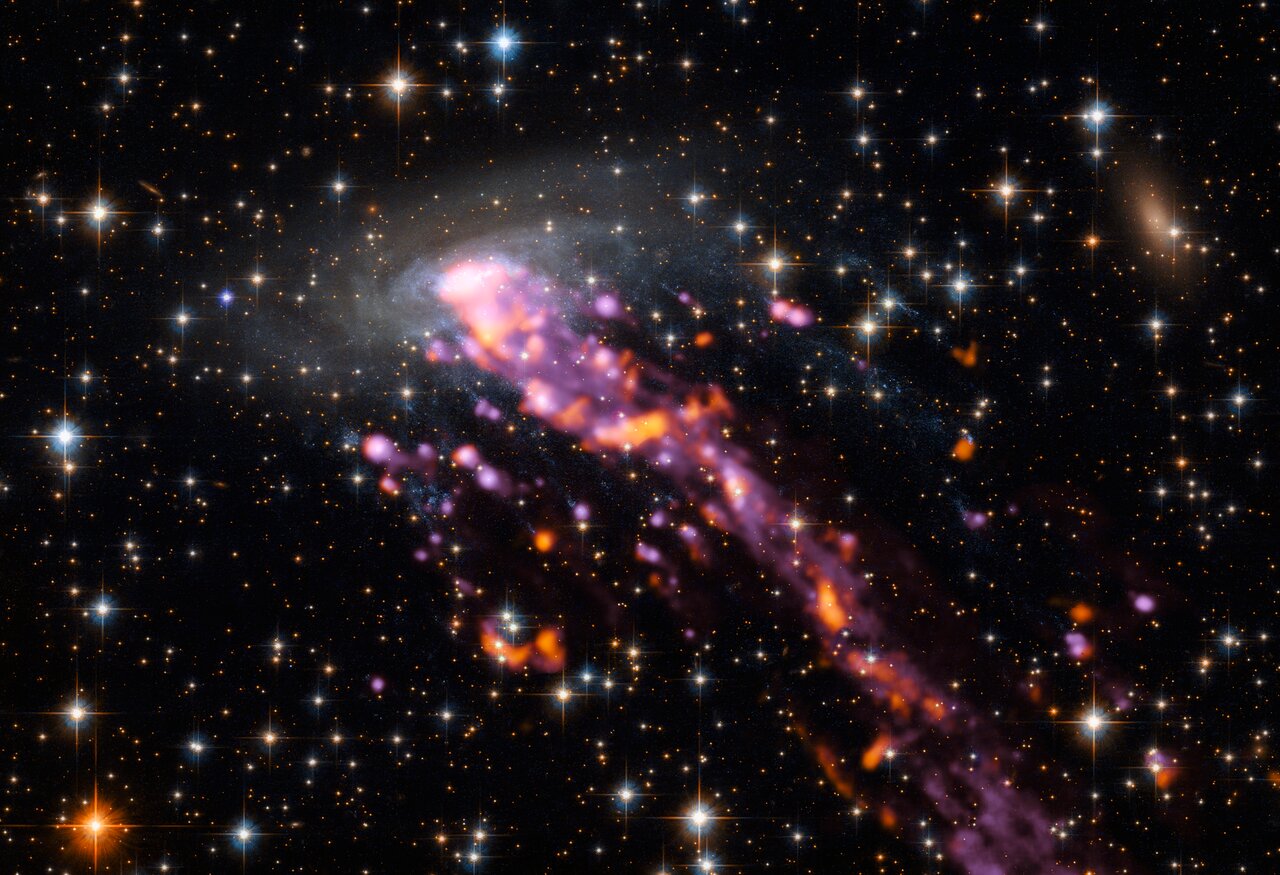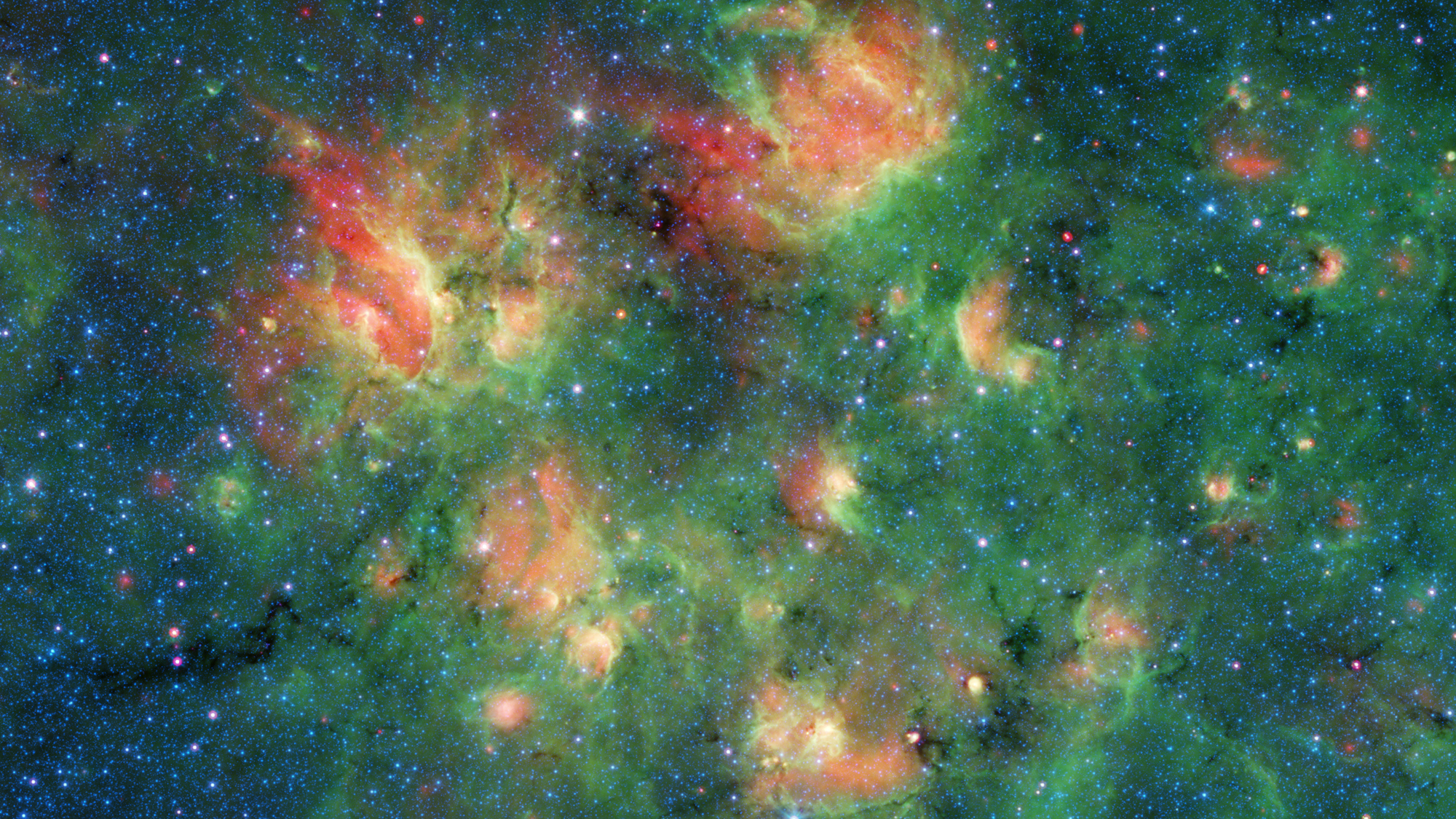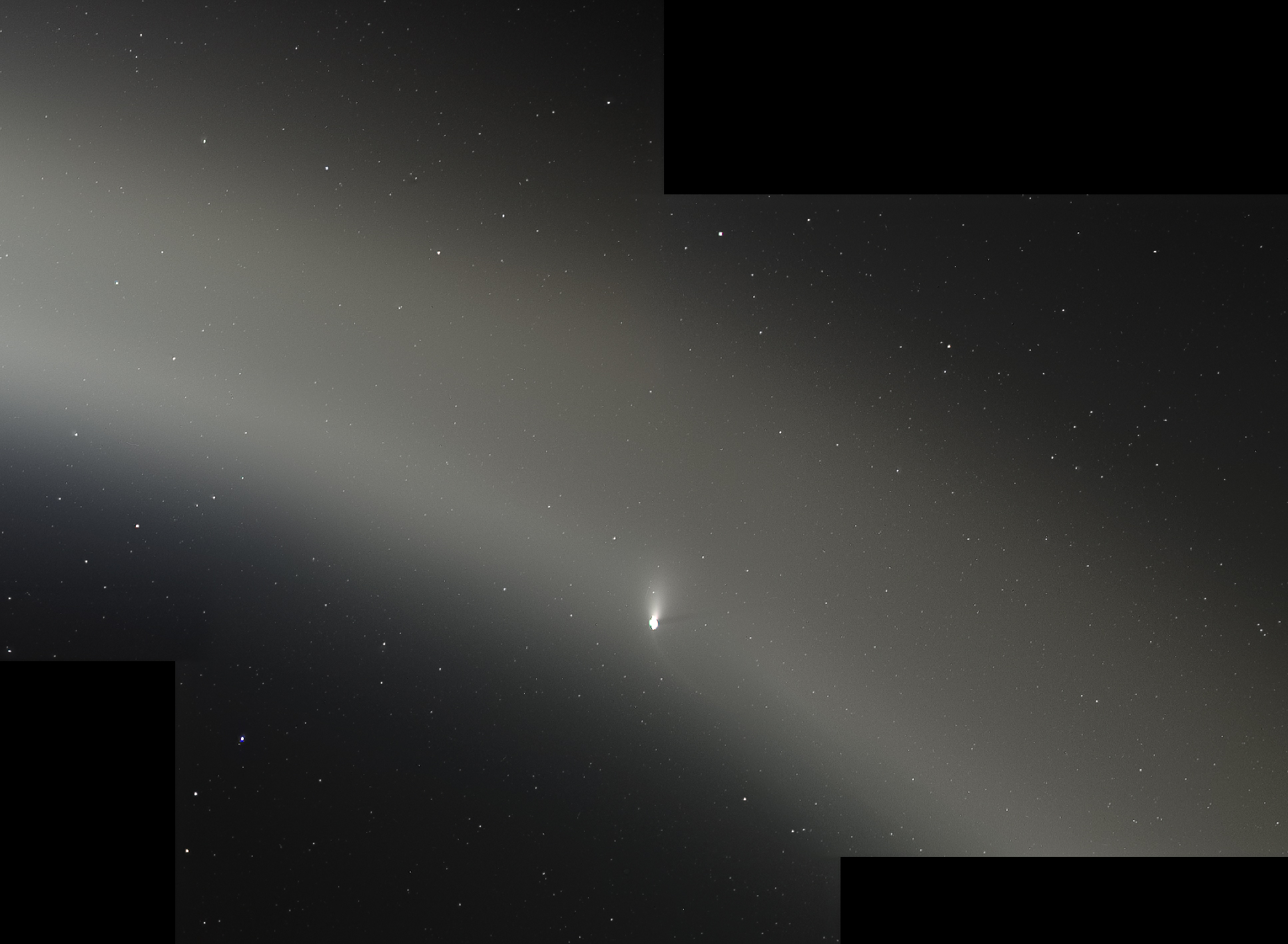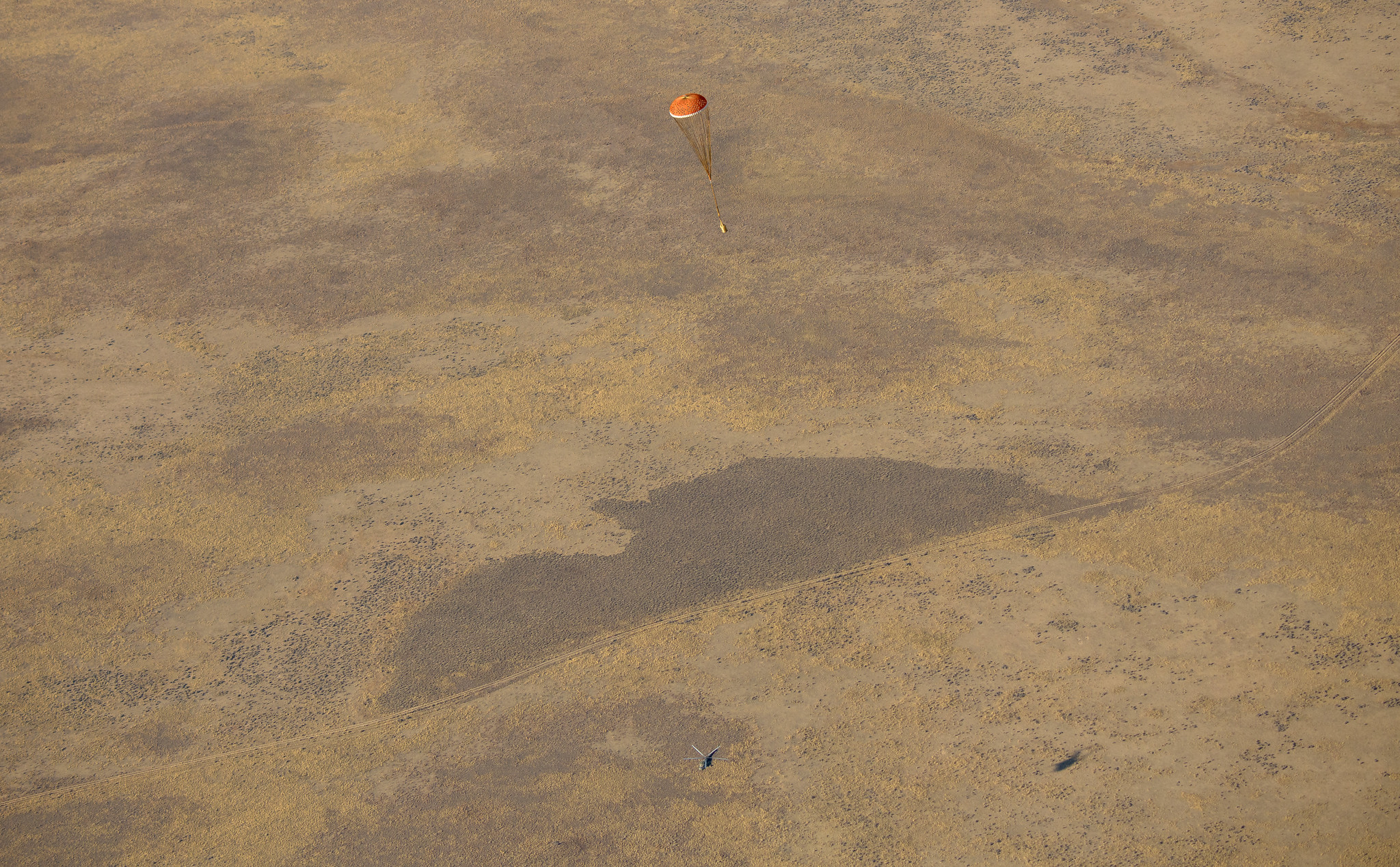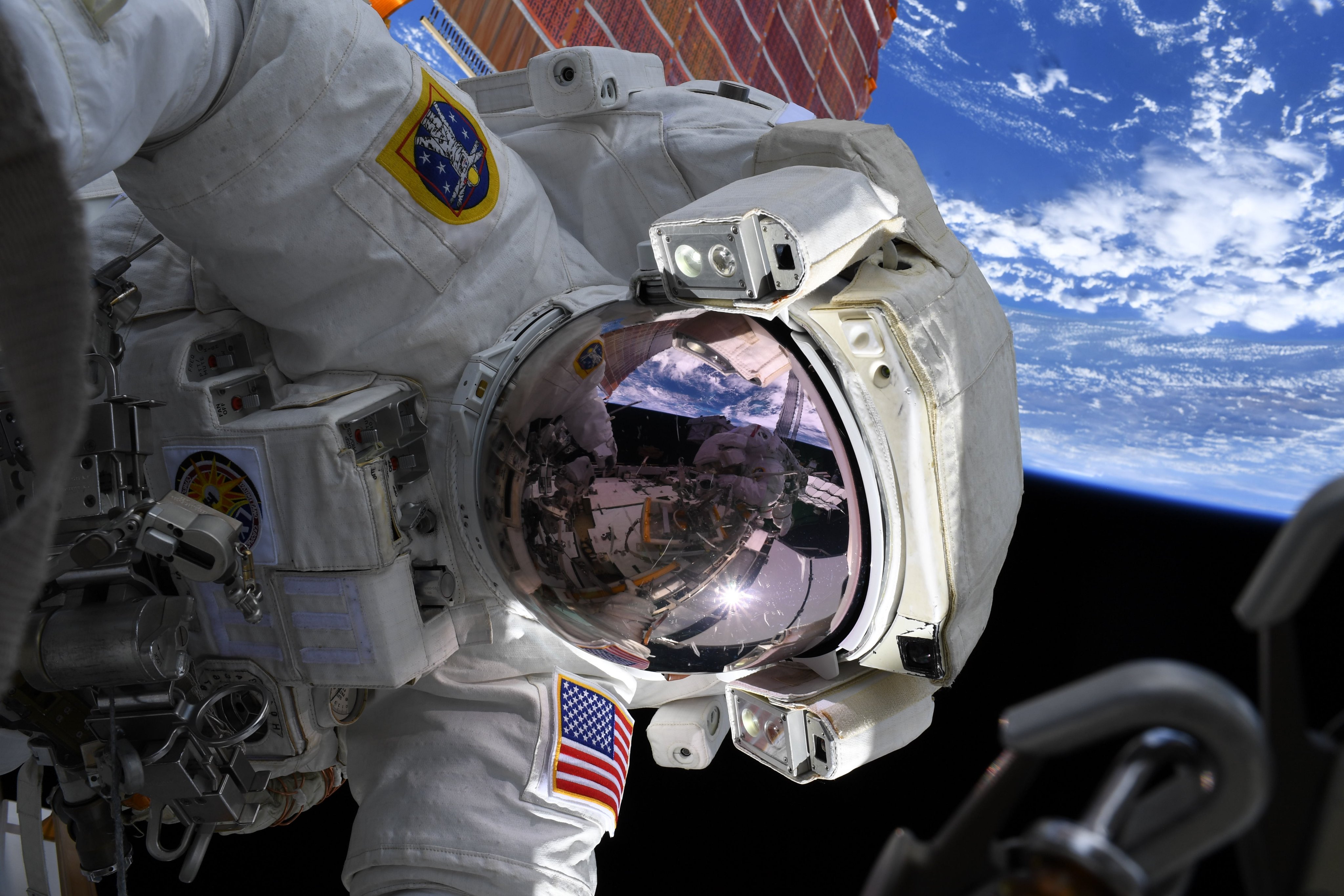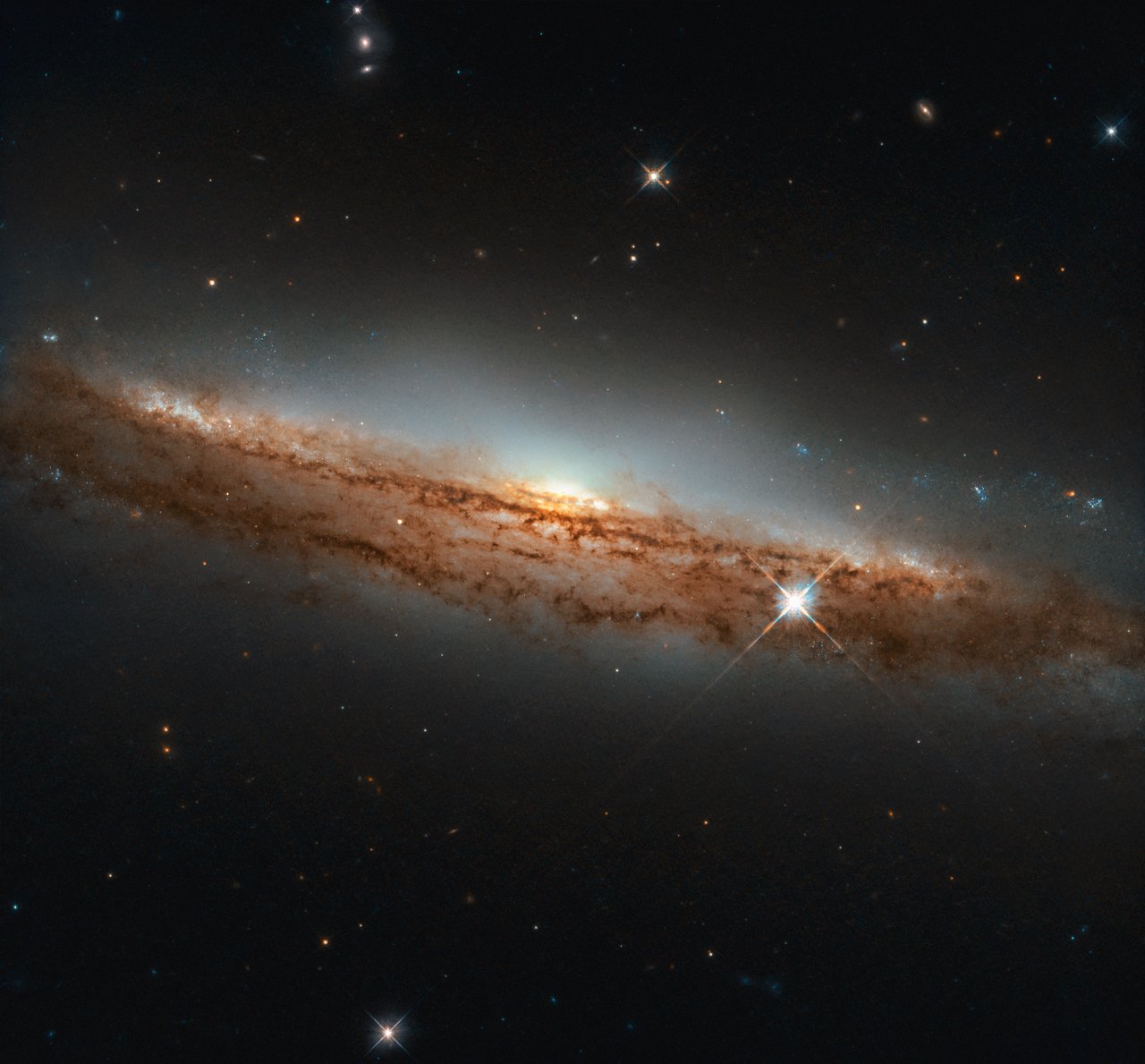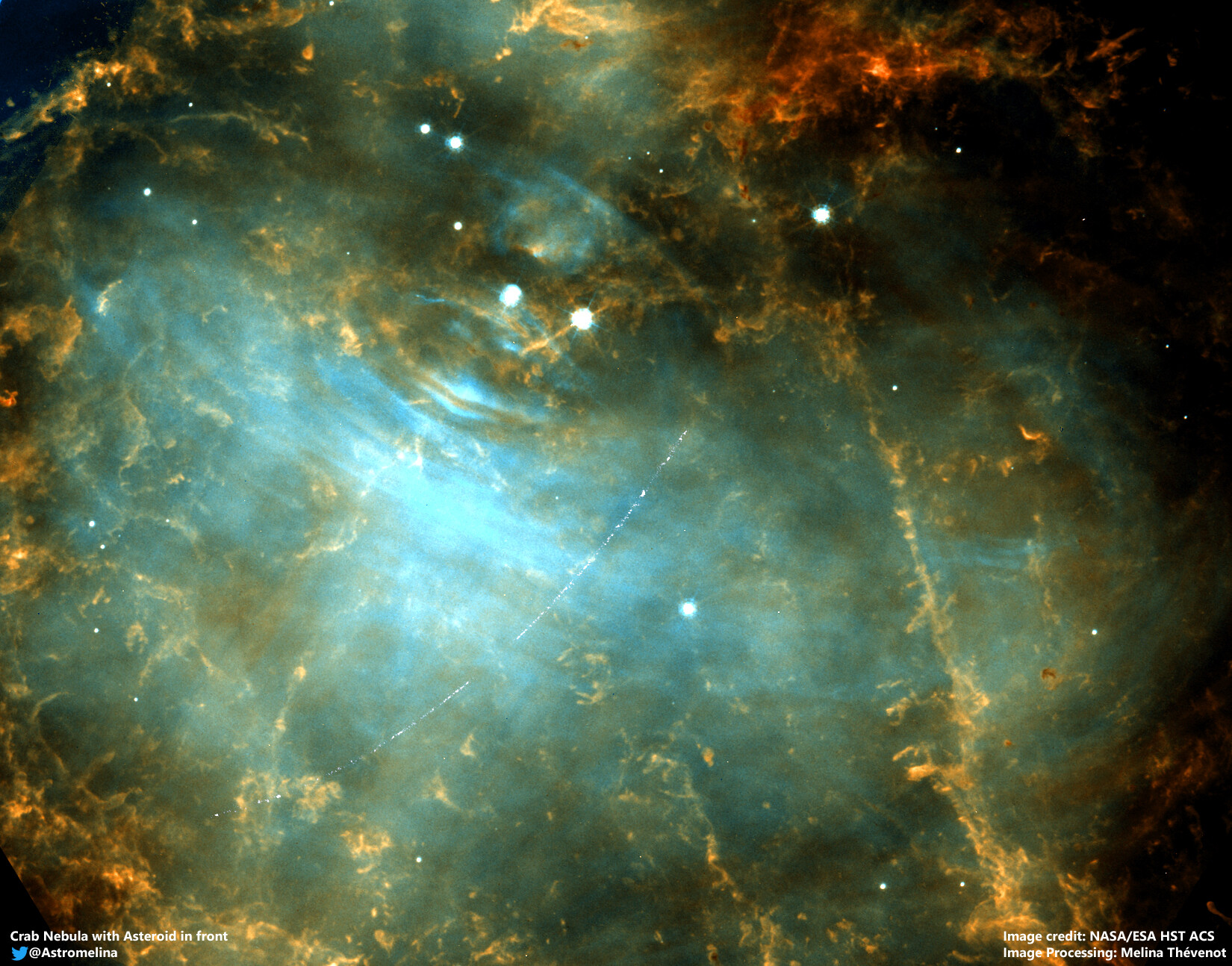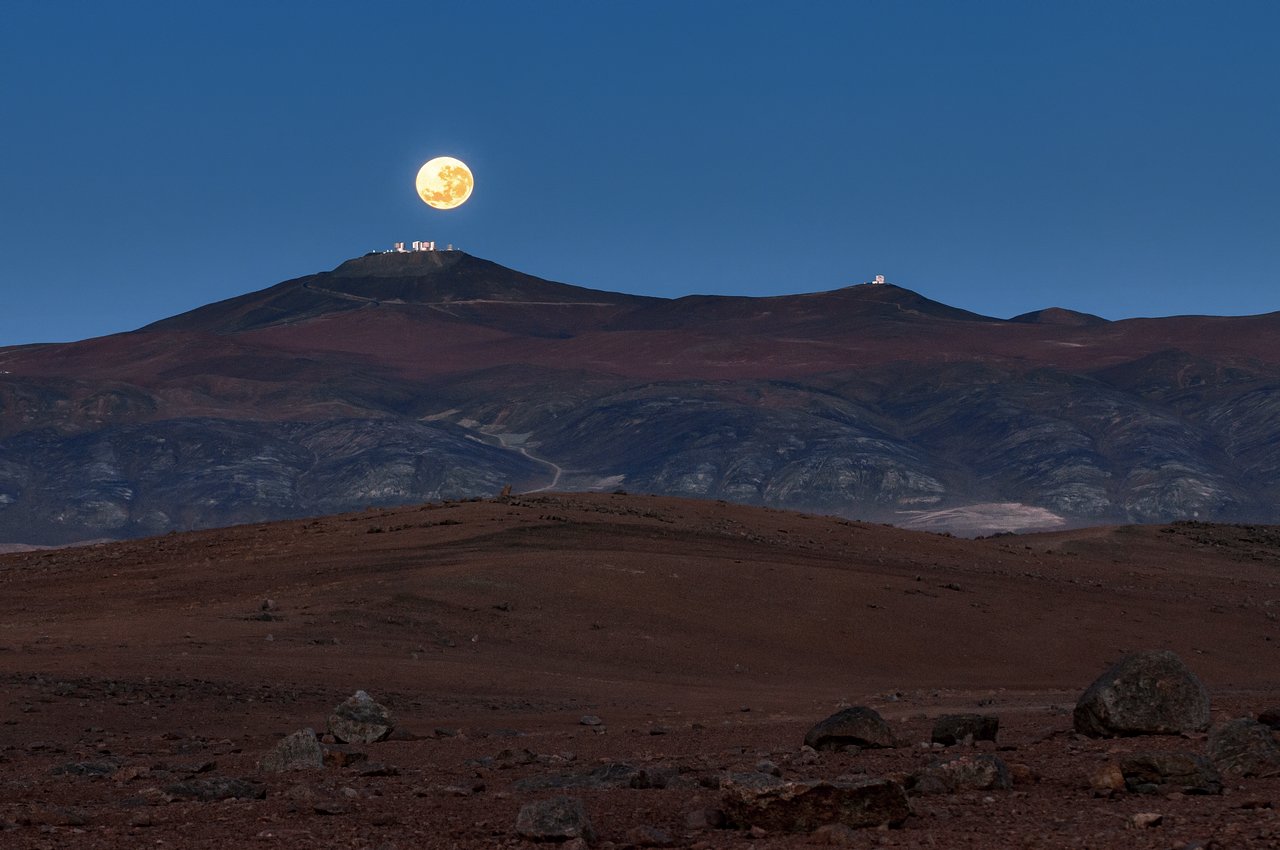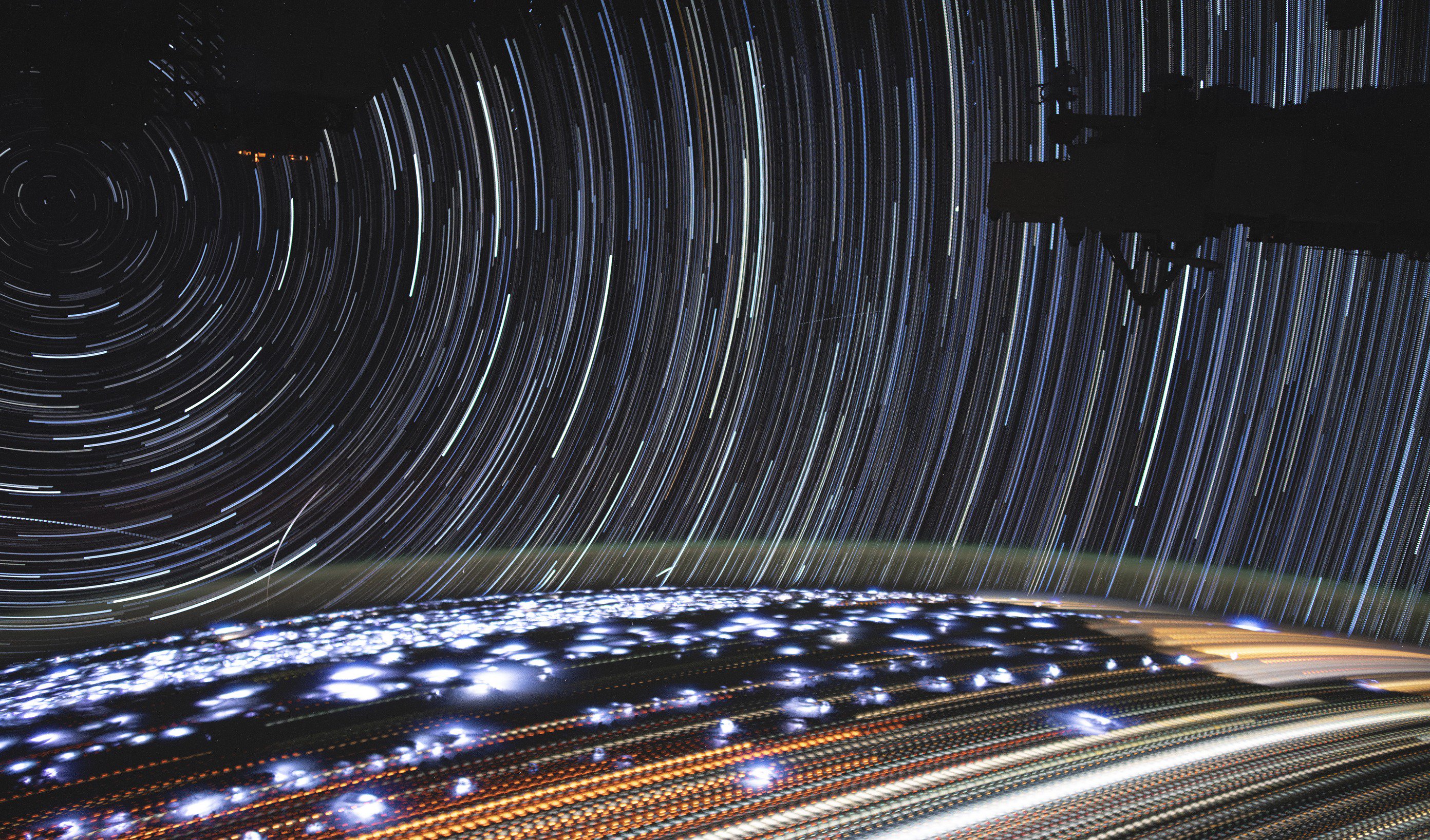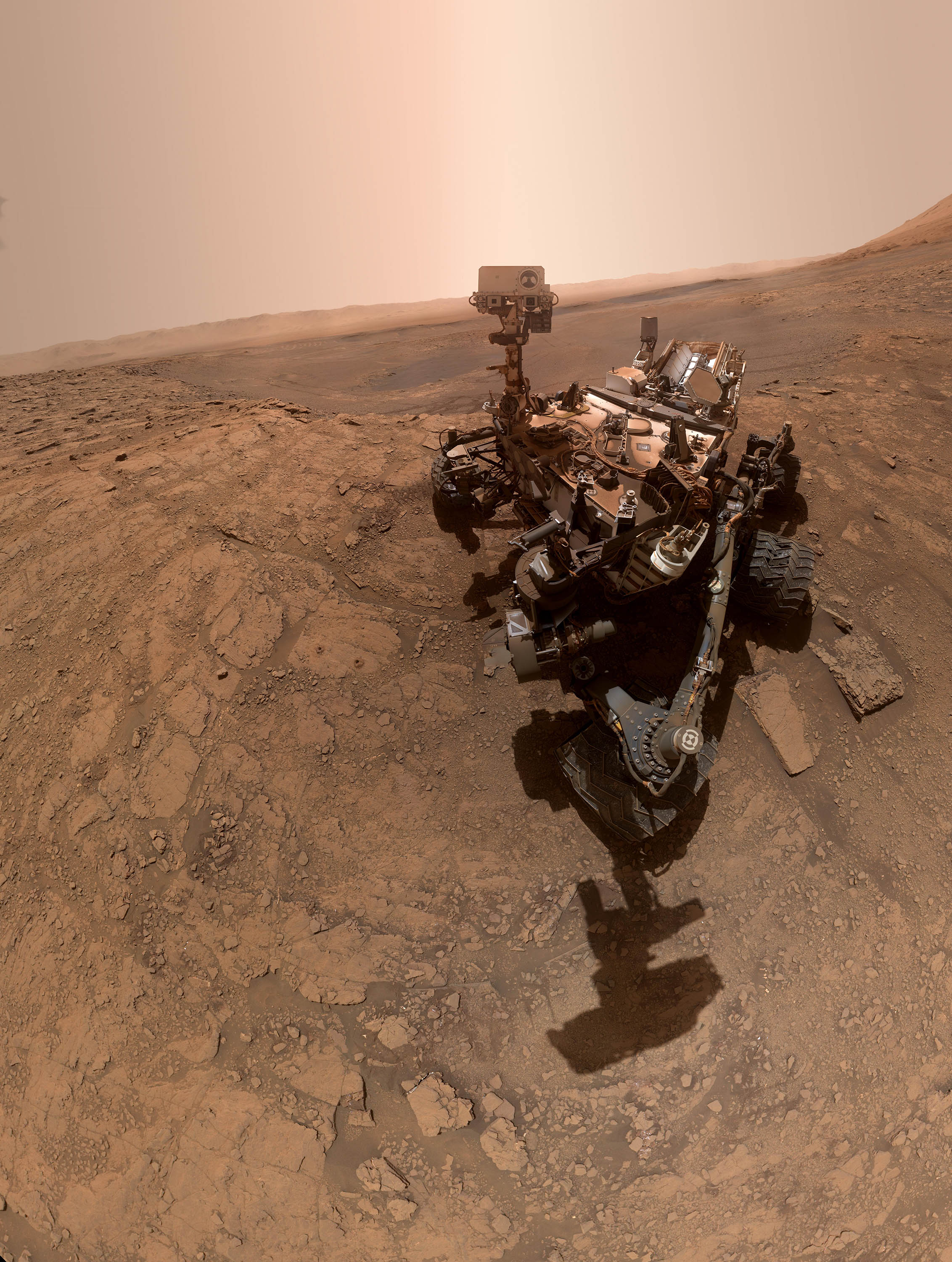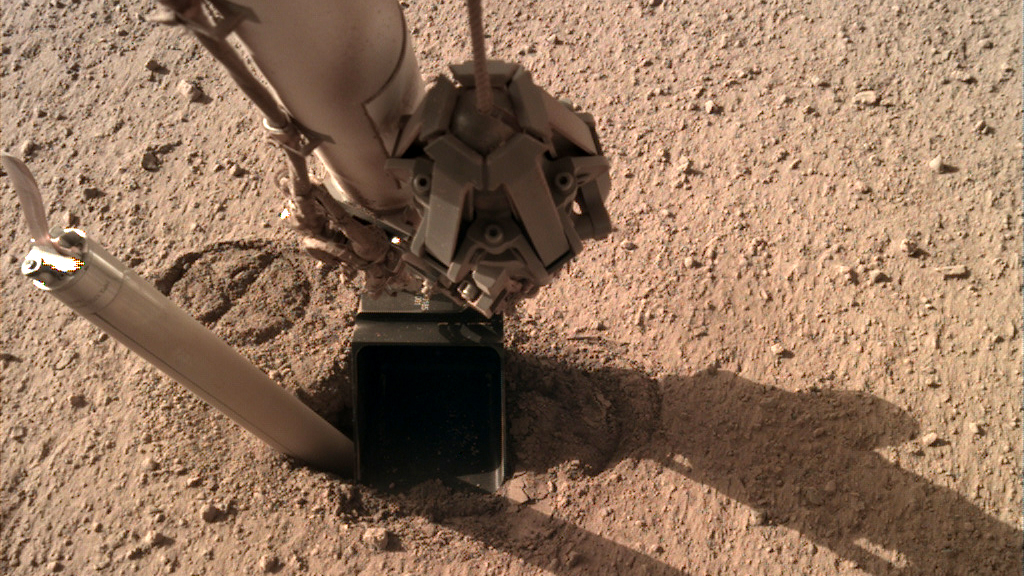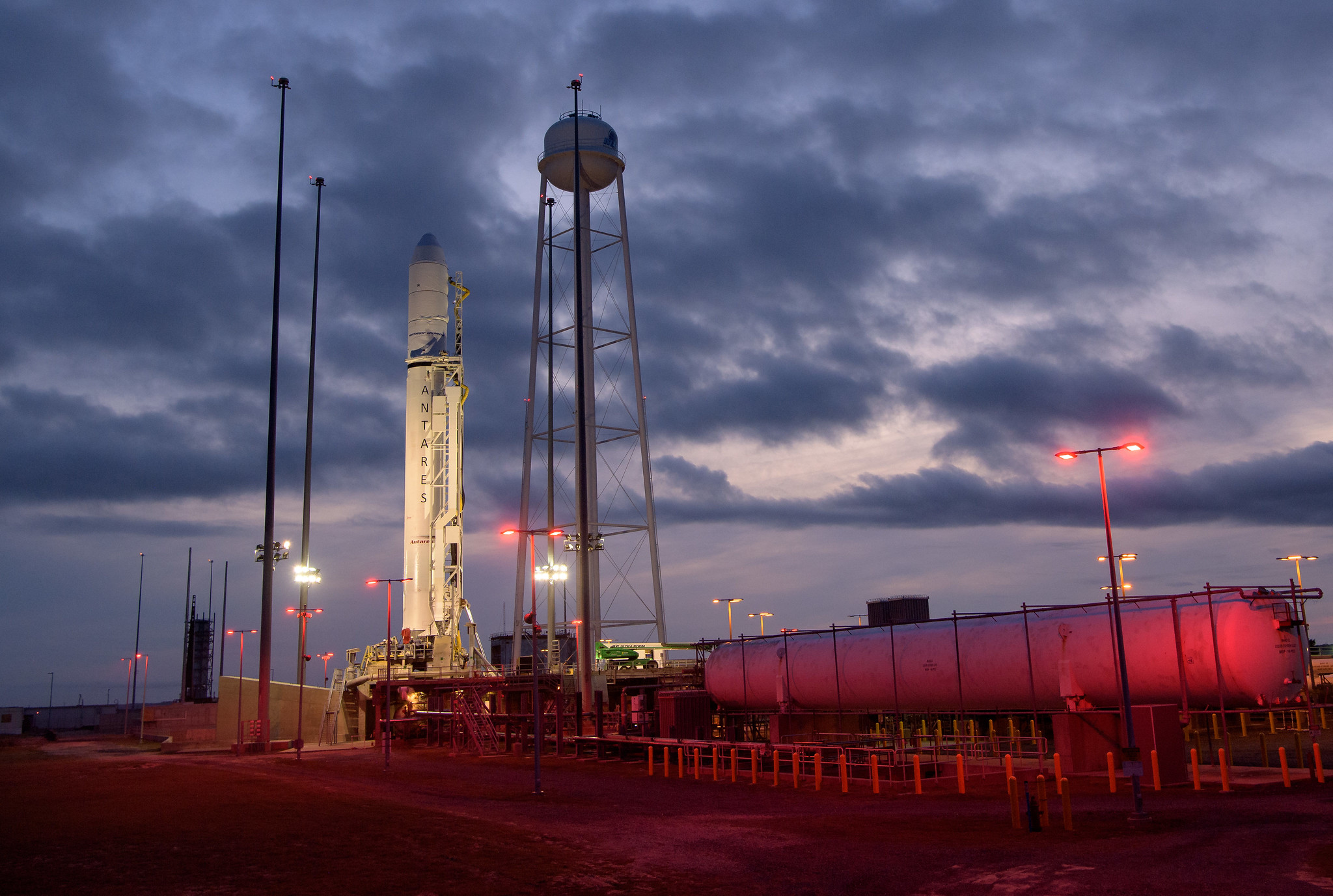Image of the Day 2019 Archive
Explore our Image of the Day 2019 Archives!
October 2019
A Cosmic Jellyfish Swims in Deep Space
Tuesday, October 1, 2019: A spiral galaxy with gassy "tentacles" swims through the constellation Triangulum Australe in this new image from the Atacama Large Millimeter/submillimeter Array (ALMA) and the Very Large Telescope (VLT). The galaxy, named ESO 137-001, is being stripped of hot gas as it moves through space, where clouds of intergalactic gas tug the material away from the galaxy through a process called ram-pressure stripping. This creates a long trail behind the galaxy that stretches across 260,000 light-years. — Hanneke Weitering
Cosmic 'Bubbles' Bursting With Stars
Wednesday, October 2, 2019: In a new image from NASA's Spitzer Space Telescope, giant "bubbles" of dust and gas are bursting with new star formation. According to NASA, each of these bubbles contains hundreds of thousands of stars. These cosmic bubbles get their shape from stellar winds radiation emitted from massive young stars, which can push the cloud's material outward, causing it to "inflate," or expand.
Citizen scientists helped NASA map out these bubbles as part of The Milky Way Project, which is mapping star formation throughout the Milky Way galaxy. You can find an annotated version of this image that points out all the different bubbles here. — Hanneke Weitering
Enceladus in Saturn's E Ring
Thursday, October 3, 2019: Saturn's icy moon Enceladus is pictured with the planet's faint E ring in this image from NASA's Cassini spacecraft. The E ring is one of Saturn's outermost rings, and scientists believe that it is made up of icy water droplets that have been spewing from the geysers and plumes on Enceladus. Cassini captured the data for this image on March 15, 2017, precisely six months before its mission ended with an epic plunge into Saturn. Citizen scientist Kevin Gill recently processed this image using red, green and blue filtered images from Cassini's narrow-angle camera. — Hanneke Weitering
Welcome Home!
Friday, October 4, 2019: Three space station crewmembers, including the first Emirati astronaut, parachute back down to Earth in their Soyuz spacecraft in this aerial view by NASA photographer Bill Ingalls, who joined the search and recovery teams in a helicopter. On board the Soyuz MS-12 spacecraft were NASA astronaut Nick Hague, Russian cosmonaut Alexey Ovchinin and first-time astronaut Hazzaa Ali Almansoori of the United Arab Emirates. They touched down in Kazakhstan on Thursday (Oct. 3) at 6:59 a.m. EDT (1059 GMT or 4:59 p.m. local time). — Hanneke Weitering
Say Cheese!
Monday, October 7, 2019: Now here's an office with the ultimate view. NASA astronaut Drew Morgan poses for a photo during a spacewalk on Sunday, Oct. 6, to kick off an epic 10-spacewalk marathon to swap out old batteries on the station's solar array grid with new ones.
Morgan wasn't alone on the spacewalk. NASA astronaut Christina Koch ventured outside with Morgan as the EVA (extravehicular activity) lead. She wore a red-striped spacesuit and actually took this picture! (You can see Koch taking the photo in the reflection of Morgan's visor).
Breaking space news, the latest updates on rocket launches, skywatching events and more!
Read our full story here for a wrap up of the spacewalk. The next EVA in the series is on Friday, Oct. 11. — Tariq Malik
A Dusty Spiral
Tuesday, October 8, 2019: This photo from the Hubble Space Telescope shows the spiral galaxy NGC 3717, a dusty swirl of stars about 60 million light-years away. The galaxy is located in the direction of the constellation Hydra, the Sea Serpent, and is tilted in this view so that Hubble gets a sense of its spiral shape, but not an edge-on view. — Tariq Malik
A Feathered 'Photobomber' at La Silla
Tuesday, October 15, 2019: A mysterious bird and its seemingly huge talons photobomb an all-sky camera's view of the cosmos in this lucky shot from the La Silla Observatory in Chile. The all-sky camera constantly streams live views of the Danish 1.54-meter telescope, allowing online spectators to see the telescope in action, observe the Milky Way — and occasionally catch a glimpse of the local wildlife. Officials with the European Southern Observatory, which operates the telescope facility, have not yet been able to identify the species of the bird that perched on this all-sky camera, but they suspect it was a nocturnal bird of prey. — Hanneke Weitering
Asteroid Zips Across the Crab Nebula
Wednesday, October 16, 2019: While capturing an image of the Crab Nebula, the Hubble Space Telescope inadvertently also caught a view of an asteroid in our solar system passing through the foreground. The Crab Nebula is a supernova remnant located approximately 6,300 light-years from Earth in the constellation of Taurus, the Bull. An asteroid, designated 2001 SE101, can be seen streaking across the frame from the bottom left toward the top right of the image. Citizen scientist Melina Thévenot from Germany discovered the asteroid photobomb in this 2005 Hubble image as part of the European Space Agency's "Hubble Asteroid Hunter" citizen science project. — Hanneke Weitering
Astronaut's View of the First Quarter Moon
Thursday, October 17, 2019: The first-quarter moon rises over Earth's thin, blue atmosphere in this photo taken by an astronaut at the International Space Station. One of the six Expedition 61 crewmembers on board captured this view on Oct. 5, when the moon was waxing. It became full on Sunday (Oct. 13), and the moon will once again be half illuminated on Monday (Oct. 21) when it reaches its third quarter phase. — Hanneke Weitering
Milky Way Over ALMA
Friday, October 18, 2019: The Milky Way glistens above four antennas of the Atacama Large Millimeter/submillimeter Array (ALMA), a telescope array in northern Chile. The antennas, which are located at ALMA's Array Operations Site near on Chajnantor plateau, are at an altitude of about 16,400 feet (5,000 meters), and the facility is one of the highest human-made structures in the world. — Hanneke Weitering
A Jovian Jet Stream
Monday, October 21, 2019: A new view from NASA’s Juno spacecraft shows a swirling jet stream in Jupiter’s northern hemisphere. This dark belt of swirling clouds is known as "Jet N4," and Juno captured this close-up image of the feature during a flyby on Sept. 11, when the spacecraft was about 7,540 miles (12,140 kilometers) from the planet’s cloud tops. Citizen scientist Björn Jónsson created this enhanced image using data from the spacecraft's JunoCam imager. — Hanneke Weitering
'Space Selfie'
Tuesday, October 22, 2019: NASA astronaut Jessica Meir pauses to take a selfie during her historic first all-woman spacewalk together with Christina Koch on Oct. 18. In the reflection on her spacesuit visor, you can see parts of the International Space Station's exterior and planet Earth. — Hanneke Weitering
Related: The Best Astronaut Selfies in Space
Paranal Observatory by Moonlight
Wednesday, October 23, 2019: A full moon glows over the Paranal Observatory in the Atacama Desert of northern Chile in this view captured by astrophotographer Gerard Hüdepohl. The observatory is located on top of Cerro Paranal, a mountain with an elevation of 8,500 feet (2,600 meters), and it is home to several telescope facilities. The Very Large Telescope (VLT) array and the VLT Survey Telescope are both visible at the top of the peak in this photo, on the left, and four smaller auxiliary telescopes are on the smaller peak to the right. — Hanneke Weitering
Star Trails and Lightning Over Earth
Thursday, October 24, 2019: In this photo from the International Space Station, star trails circle above the Earth while bright lightning flashes and city lights illuminate the planet's surface and skies. The image is a composite that combines more than 400 photos captured by NASA astronaut Christina Koch over the span of 11 minutes, when the space station was traveling from Namibia toward the Red Sea. — Hanneke Weitering
Curiosity Rover Snaps a Selfie
Friday, October 25, 2019: NASA's Curiosity rover, which has been exploring Mars for the last 7 years, took a new selfie on the Red Planet this month. The image is a panorama combining 57 images taken by the Mars Hand Lens Imager (MAHLI), a camera on the end of the rover's robotic arm, and the rover's arm isn't visible in all of the frame that make up the composite. When Curiosity made this selfie on Oct. 11, it was exploring an area called "Glen Ative" inside Gale Crater, where it recently drilled two holes that are visible on the left. — Hanneke Weitering
InSight's 'Mole' Hits Another Snag
Monday, October 28, 2019: New images from NASA's InSight Mars lander released over the weekend show the spacecraft's heat probe, an instrument known as the "mole," has hit a snag while attempting to burrow into the Martian soil. The mole, which is attempting to probe a target depth of 10 to 16 feet (3 to 5 meters) into the ground, recently received a helping hand from a scoop on InSight's arm after it got stuck in the dirt, and that operation helped get the mole moving. However, the new images from InSight's instrument deployment camera show the heat probe appears to have jumped out of the hole and is now leaning to the side. NASA plans to provide an update on the mole's situation sometime today. — Hanneke Weitering
Moonrise at Sunrise
Tuesday, October 29, 2019: A tiny sliver of the crescent moons gleams above Earth's blue horizon just before sunrise in this stunning view from the International Space Station. NASA astronaut Christina Koch shared this image from space on Monday (Oct. 28), one day after the moon reached its new phase. — Hanneke Weitering
Antares Rocket Preparing for Launch
Wednesday, October 30, 2019: The Antares rocket that will launch the next cargo shipment to the International Space Station this weekend is pictured shortly after its arrival at the launch pad on Tuesday (Oct. 29). Topped with a Cygnus cargo spacecraft, the rocket will lift off from NASA's Wallops Flight Facility in Virginia on Saturday, Nov. 2, with about 8,200 lbs. (3,700 kg) of supplies and science experiments for the Expedition 61 crew. — Hanneke Weitering
Ghost Nebula Wishes You a Happy Halloween!
Thursday, October 31, 2019: Happy Halloween from space! This ghoulish space cloud is known as the "Ghost of Cassiopeia." The nebula lurks some 550 light-years from Earth in the constellation Cassiopeia, where powerful radiation from a nearby star is slowly causing its clouds to dissipate. Astronomers used the Hubble Space Telescope to captured this image, which was released last year just before Halloween. (This year, Hubble scientists released another special Halloween image of a more creepy-looking space ghost.) — Hanneke Weitering
Can't find the date you're looking for? It may have been a weekend or holiday, when we don't normally update our Image of the Day.
Click 'NEXT PAGE' below for November >

Space.com is the premier source of space exploration, innovation and astronomy news, chronicling (and celebrating) humanity's ongoing expansion across the final frontier. Originally founded in 1999, Space.com is, and always has been, the passion of writers and editors who are space fans and also trained journalists. Our current news team consists of Editor-in-Chief Tariq Malik; Editor Hanneke Weitering, Senior Space Writer Mike Wall; Senior Writer Meghan Bartels; Senior Writer Chelsea Gohd, Senior Writer Tereza Pultarova and Staff Writer Alexander Cox, focusing on e-commerce. Senior Producer Steve Spaleta oversees our space videos, with Diana Whitcroft as our Social Media Editor.
